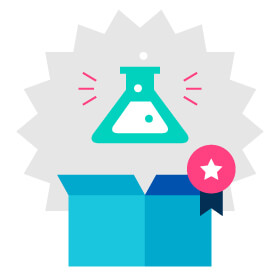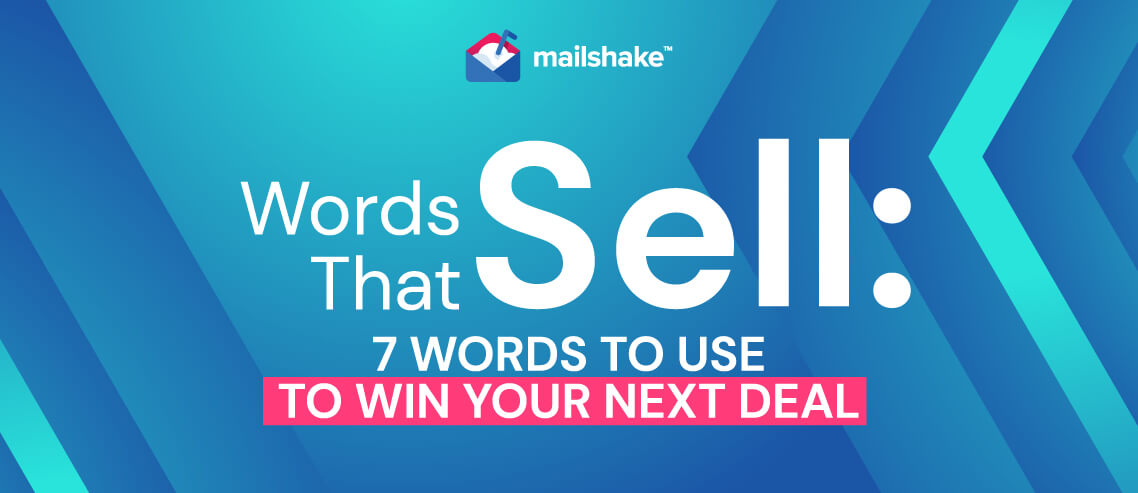The Top 9 Sales Methodologies to Consider for Your Business

Contents
It’s one thing to make sales, but it’s entirely another to find a system that delivers scalable, measurable, repeatable growth.
That’s where sales methodologies come in. Companies implement sales methodologies in their organizations to enable predictability and turn uncertain chaos into guaranteed success. When you find a process that works, you don’t need to reinvent the wheel every time.
That said, there’s more than one system for selling, and what works for one company might be a total misfire for another. Let’s dive into nine of the most popular sales methodologies to find your perfect fit.
1. Target Account Selling
One of the most commonly-used methodologies, target account selling is ideal for breaking down large deals into key components.
Each sales rep focuses on a handful of accounts rather than countless opportunities. The idea is that they can build stronger relationships within each of their accounts, get to know the potential client’s needs inside and out, and deliver consistent, high-value sales messages until they convert.
This method requires a strong alignment of marketing, sales, and customer success. Marketing will need to focus on research, nurturing campaigns, and sales collateral that allow the sales reps to grow the relationship. Sales will center on communication and relationship quality, while customer service will need to be ready for onboarding and ongoing support to help the new account be successful.
2. SPIN Selling
Neil Rackahm introduced the concept of SPIN selling in his 1988 book of the same name. The book covers insights from more than 35,000 sales calls over a 12-year span. SPIN stands for Situation, Problem, Implication, and Need-Payoff, and focuses on leading the conversation with the right questions at each of these stages.
During the Situation phase, sales reps are looking closely at the buyer’s current process and resources. Asking “Do I understand this correctly?” or “How do you currently manage X?” can better prepare you to move on to the Problem phase.
During the Problem stage, your goal is to get your prospect to point out their own problems. They take ownership of the issues and start to think about how much trouble these issues are causing. We all have pain points that bother us subconsciously, and this stage brings those issues bubbling to the surface in hopes that the prospect will want to resolve them.
The Implication phase helps the prospect to see the impact their problems create. If the issue isn’t resolved, what will happen? Your questions at this point shouldn’t be self-interested or blindly followed, but should promote a genuine desire to help and understand, not sell.
At the Need/Payoff stage, your prospect will recognize the benefits and value of your product before you have a chance to tell them, if you’ve done your job well.
Even though this methodology is 30+ years old, it’s still effective because it asks thought-provoking, non-pushy questions that tell sales reps exactly what the prospect needs.
3. Signal Based Selling
Today, with every sales interaction captured digitally — calls, emails, language, sentiment — there’s an overwhelming amount of data available to sales leaders. But the guidance we give to reps is still fuzzy and based on tribal knowledge.
Signal-based selling is a new way to transform sales data into winning rep behaviors.
Drive sales productivity as you scale by incentivizing your revenue teams to focus on the right behaviors. Tools like SetSail reward best practices in real-time to help make every sales rep behave like a top-performer.
Signal-based selling works as an always-on X-ray scan of interactions between your reps and the buyers, detecting what best reps do to win, and serving the winning behaviors as rules for reps to act on and improve. It changes the experience of your reps with guidance that is real-time, transparent, and engaging.
Incentives bring engagement, excitement, and reinforcement to following a sales process. Signal-based selling ties top signals related to winning, like VP engagement and multi-threading, to the right micro-rewards that motivate reps to change behaviors.
The core of this approach is grounded in truth: using only verified customer intent and leading indicators of success, you focus only on what matters. Made possible by AI, signal-based selling is how sales will be done in the digital age.
4. Challenger Approach
This newer sales methodology focuses on one of the five B2B sales personalities, the Challenger. The Challenger sales rep has a unique view of the world. They crave a good debate and work hard to gain a strong understanding of the customer’s business and needs.
More than 40% of high sales performers use a Challenger style, but the other four sales personalities (the Hard Worker, the Lone Wolf, the Problem Solver, and the Relationship Builder) can also successfully learn the Challenger method.
Challengers take control of the conversation and don’t rely on innate talent or skills. Instead, they push themselves to learn new skills, ask questions, and find effective ways to connect with customers. The methodology looks at the habits and traits of top performers and applies them across the organization.
5. Value Selling
Rather than selling products or services, the Value Selling methodology delivers the value or benefit of your product, not the product itself.
People don’t buy products – they buy the results of what your product creates. Think about it – you don’t buy expensive ultra-whitening toothpaste because you like how it tastes. You buy it because it promises to give you whiter teeth.
Value is the difference between the price the customer pays and the benefits they receive. The greater the benefits they receive for the price, the more valuable they perceive the product to be. And when you build enough value, price becomes less important.
The tricky part about this framework is that pricing vs. value can be subjective. In the beginning, it’s a balancing act that requires you to justify the price with the perceived value. It takes a lot of research to find targets that will buy your product at the price you set AND be able to hit their pain points that make your solution an obvious choice.
6. Solution Selling
Similar to value selling, solution selling focuses on problem-solving at large, not on the product itself. The solutions are usually highly-customized products or services based on each customer’s needs.
For example, a managed IT company might create unique cloud service bundles for each client based on their data requirements, number of devices, and the level of support they need.
Solution selling starts with figuring out your customers’ biggest pain points. To do this, look back at the deals you’ve closed and what triggered customers to buy. From there, you can develop questions that diagnose these issues. Your conversations will largely focus on the prospect and their company, not the specs and benefits of your product.
To close the deal, you’ll incorporate strategies similar to the value selling methodology that show how your solution creates an optimal outcome.
7. Sandler Selling System
One of the oldest sales methodologies still in use today, the Sandler Selling System is based on customer buying behaviors vs. formulas and processes. When executed correctly, the buyer believes they are pursuing the deal, resulting in a less pushy, non-salesy transaction.
The initial contact is more like a conversation than a sales call. Things like budget restrictions and time poverty are exposed up front rather than later in the sales cycle. Objections are a first hurdle instead of a final surprise obstacle. Once they’re revealed, sales reps have a better idea of whether the solution is right for the prospect.
Here are the three basic stages of the Sandler Selling System:
- Build and grow the relationship. Successful selling starts with good rapport with the prospect. You need to display a genuine desire to help them overcome their toughest challenges to earn their trust.
- Qualify the prospect. Before you start selling, you need to make sure the prospect is qualified for you to sell to. Not everyone will be a good fit for your product or service, so find out up front if you can help them and let the rest go.
- Close the deal. Prospects that make it past the qualifying stage have a strong chance of closing. At this point, you should only focus on the pain points you initially discussed to keep the conversation on track.
This methodology can be a huge time-saver for sales reps because it eliminates bad deals earlier rather than later in the cycle. You don’t spend as much time on prospects that wouldn’t have closed no matter what you said or did so you can move on to better opportunities faster.
8. Conceptual Selling
Conceptual selling shares many of the same characteristics as solution selling, except that you’re not selling a product, per se. Rather, your “product” is an idea of the solution. The main objective is to align your sales process with how customers buy to create a win/win situation with every opportunity.
There’s a huge emphasis on listening and asking intelligent questions with this methodology. Sales reps should focus on getting information AND confirming their understanding of that information.
Whatever the prospect says about their pain points or objectives, the sales rep directly relates to the product. This adds real perspective to what that product can do for that customer and gives them a better idea of how it will work in their application.
Conceptual selling provides sales reps with an effective framework for planning and conducting customer interactions. Sales reps should focus on the way customers buy and what’s making them seek out a solution now. From there, you can better present your competitive advantages and create an action plan for how the customer can use your product.
9. Inbound Selling
Marketing and sales are becoming increasingly entangled. In the past, customers leaned heavily on sales reps to guide them to a solution, but that’s not the case today.
People want to explore ideas, products, and solutions on their own before reaching out to sales. It’s estimated that by the time a prospect finally connects with a sales rep, they’re already more than 57% of the way through the buying cycle.
This says two things:
First, marketing is playing a heavier role in the sales process. Strong marketing is responsible for getting prospects this far into the sales cycle so the sales rep can pick up where marketing leaves off.
Second, prospects that make it this far are active buyers, not just passive leads. Sales reps have a better chance of closing prospects that are proactively reaching out to learn more rather than tire kickers who probably fell into the sales funnel by accident.
This is the premise of inbound selling. Instead of chasing leads and weeding out the bad ones, quality leads are coming to you. Inbound selling allows sales teams to meet the customer wherever they are in the buying journey, and deliver value and meaning throughout the conversation.
This method takes into account that you’re working with an informed prospect. They’re already interested in what you may be able to do for them. They already know something about the solutions you sell and are expecting you to guide them to the right one.
Sales reps assume less of a salesperson role, and more of a consulting role. They must be able to adapt their sales process to the customer’s unique stage in the buying journey. This helps to strengthen the exploration and connection phases to give the prospect the best chance of coming to a desirable conclusion.
How Should You Be Selling?
If there were a single-best sales methodology, everyone would be using it. Instead, you’ll have to do some exploring and testing on your own to figure out what works for you.
Yes, you’ll need to invest time and resources into learning how these methodologies work, training your people on how to use them, and understanding how best to implement them. But if that means creating a solid system that helps you increase your wins and reduce your losses, consider it time and money well spent.





